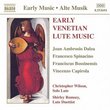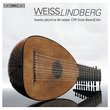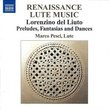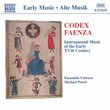| All Artists: John Dowland, Jakob Lindberg Title: John Dowland: Complete Music for Solo Lute Members Wishing: 1 Total Copies: 0 Label: Brilliant Classics Original Release Date: 1/1/2008 Re-Release Date: 6/10/2008 Genres: Dance & Electronic, Special Interest, Classical Styles: Marches, Chamber Music, Historical Periods, Classical (c.1770-1830), Instruments, Strings Number of Discs: 4 SwapaCD Credits: 4 UPC: 842977036985 |
Search - John Dowland, Jakob Lindberg :: John Dowland: Complete Music for Solo Lute
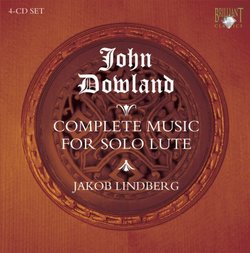 | John Dowland, Jakob Lindberg John Dowland: Complete Music for Solo Lute Genres: Dance & Electronic, Special Interest, Classical
|
Larger Image |
CD DetailsSimilar CDs |
CD ReviewsExcellent performances of remarkable repertoire S. M. Struhl | Wilmette, IL United States | 12/07/2009 (5 out of 5 stars) "The review by "a certain bibliophile" provides an admirable level of detail about the pieces' history but does not discuss the performances, which are excellent. Lindberg obviously knows and understands this music, and has ample technique and the musical taste to convey it eloquently. Knowing these pieces "from the inside," that is, studying them and learning to play them, I find them some of the most remarkable musical achievements of their time. To put it simply, Dowland's pieces unfailingly sound musically compelling, even after hundreds of years, unlike the works of many of his contemporaries. He has one of the strongest gifts for memorable melodies of any composer of his time, but also a very modern-seeming understanding of key changes, development of musical ideas and use of highly chromatic passages. A player needs to know when to be forceful and when to take a more reflective tone to capture the many moods this music conveys. Lindberg does this and makes it seem easy. One advantage of this set is that he plays different lutes with very different sound qualities to fit the pieces (as well as to reflect the evolution of the instrument during Dowland's time), and the changes in timbre bring new dimensions to many compositions. Nigel North recently completed another excellent survey of Downland's lute music, and both have compelling but not identical points to make about the various pieces. Those who know the music well definitely will want both sets, which stand as worthy companions to Julian Bream's earlier, and still exemplary, collections of Dowland's pieces." Särskild, min gamle vän! Lyckönskan! Giordano Bruno | Wherever I am, I am. | 07/06/2010 (5 out of 5 stars) "There are at least three CD sets of the complete solo lute music of John Dowland, by Paul O'Dette, Nigel North, and Jakob Lindberg. All three are marvelous, but I'm inclined to favor this set by the Swedish lutenist Jakob Lindberg, partly because the recording technology seems to my ears to have captured and reproduced the rich timbres of his lute more realistically than the other two, and partly because Lindberg is the right lutenist for Dowland's dance forms - galliards especially - the one whose energetic tempi most evoke the lords a-leaping and ladies prancing of Tudor England. Lindberg is an effortless technician, a lutenist whose fingers are so exact that he has no need to smudge his interpretations with indefinite legatos and slurries of notes. The core of lute technique is "touch", literally the contact of the player's figure pads with the chords of his instrument, and the "touch" that distinguishes the sound of the lute from the guitar is the measure of how much "string" one hears in balance with the scrape or flick of the finger. It's the pure sonority of "touch" that makes Lindberg and O'Dette the most admired performers on the Renaissance lutes used for the music of Dowland.
Dowland's solo lute music ranges from strophic dances that might easily be adapted to "Bluegrass" or "Celtic Revival" performances to elaborately contrapuntal and moody fantasies, comparable to his famous "Lachrymae" for viol da gamba consort. There's a sweet melancholy to Dowland's musical personality, which the composer himself noted: "Semper Dowland, Semper Dolens" - "Always Dowland, Always Grieving". But few composers have ever rendered grief so delicate and ravishing." |

 Track Listings (23) - Disc #1
Track Listings (23) - Disc #1